Think about how you interact with your favorite brands these days. Maybe you first saw an interesting jacket advertised on Instagram while scrolling on your phone. Later that evening, you browsed their website on your laptop to check sizes and colors. Perhaps you added it to your online order using their mobile app but wanted to think about it. Finally, you decided to visit their physical store on the weekend to try it on before making the purchase.
How smooth was that whole journey? Did it feel like one seamless shopping experience where the brand recognized you and your interests at each step? Or did it feel fragmented, like starting over every time you switched from your phone to your laptop to the store?
That difference is what defines an omnichannel retail strategy. The term gets used a lot, but it means more than just being active on multiple platforms. That’s multichannel.
Omnichannel goes deeper. It connects all your touchpoints, such as your website, mobile app, social media, email, store, and customer support, into one smooth and unified experience for your customer.
At Mobisoft Infotech, we build modern ecommerce setups tailored for today’s shoppers. A seamless omnichannel strategy is at the heart of what we do. Whether you're exploring scalable omnichannel retail solutions or preparing your systems for future ready commerce, we help you delight customers, earn their loyalty, and grow your business.
Let’s look at why this matters and how you can make it work.
What Exactly is an Omnichannel Experience, Really?
Think of your brand as having an ongoing conversation with each customer. An omnichannel customer experience keeps that conversation smooth and connected, no matter how the customer interacts with you.
They might switch from browsing your website to chatting in your app, opening an email, clicking on a social media post, or visiting your store. It should all feel like one cross channel customer experience.
A true omnichannel setup includes:
Consistency
Your logo, colors, tone, and product details look and feel the same everywhere.
Continuity
Customers can pick up where they left off. They might start on their phone, add something to the cart on a tablet, and check out later on a desktop without losing anything.
Context Awareness
Your brand remembers past interactions. If a customer calls support, the agent can see their recent chats or orders, so the customer doesn’t have to repeat themselves.
Choice and Convenience
Customers get to shop, ask questions, and get help in the way that works best for them. They can switch between channels whenever they need to.
It’s all about shifting the focus from channels to customers. When every touchpoint works together, you create a better experience.
For businesses looking to streamline and enhance their mobile eCommerce app development, the flexibility and user experience of a well integrated app can play a vital role in this seamless customer journey.
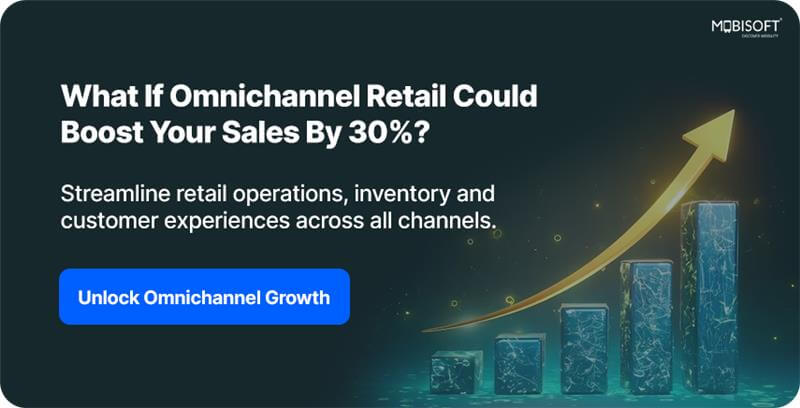
Why Omnichannel Isn't Just a Buzzword, It's Essential Survival

Today’s digitally savvy consumers don’t view channels as separate. They expect to move seamlessly between them.
Customers Expect It
They use multiple devices and platforms daily and naturally expect brands to keep up, providing a smooth transition. A disjointed experience feels jarring and unprofessional.
The Messy Customer Journey
The path from discovering a product to buying it is rarely a straight line. It involves research across multiple sites, social validation, maybe an in store visit, and price comparisons. Your strategy needs to support this complex, non linear reality using smart customer journey mapping techniques.
For instance, check out our omnichannel retail success story, where we helped a major retail chain bridge the gap between their digital and physical touchpoints.
Loyalty is Earned Through Experience
A seamless, helpful, personalized omnichannel experience makes customers feel understood and valued. This builds tremendous loyalty, leading to repeat business and positive word of mouth. Studies consistently show that omnichannel customers spend significantly more
Staying Ahead of the Curve
Brands that master omnichannel provide a superior experience that competitors operating in disconnected silos simply can't match. It becomes a powerful competitive advantage.
In store digital solutions can also provide that additional integration to make the entire customer journey smoother. Find out more about how we’ve helped retailers optimize their in store and digital connections
The Building Blocks of a Winning Omnichannel Strategy
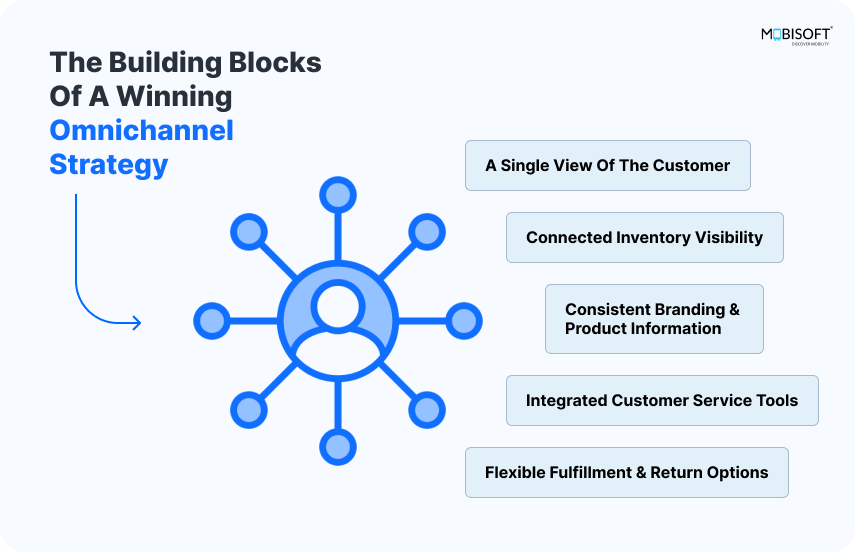
Creating this seamless flow requires integrating several key capabilities:
A Single View of the Customer
This is foundational. You need a way to recognize a customer and consolidate their interactions, preferences, purchase history, and support tickets across all touchpoints into one unified profile. This often relies on robust Customer Relationship Management (CRM) systems or specialized Customer Data Platforms (CDPs).
Connected Inventory Visibility
Real time knowledge of stock levels across all locations online warehouses, distribution centers, and physical stores. This is non-negotiable for enabling popular features like checking in store availability online or offering "Buy Online, Pick up In-Store."
Consistent Branding & Product Information
Ensure that your brand messaging, visuals, product details, and pricing are accurate and uniform everywhere.
Integrated Customer Service Tools
Equipping your support teams (chat, phone, email, in store) with tools that provide a complete view of the customer's history, allowing them to offer informed, contextual help.
Flexible Fulfillment & Return Options
Offering convenient choices like Buy Online, Pick up In Store (BOPIS), Buy Online, Return In Store (BORIS), and Ship from Store transforms physical locations into strategic assets.
Technology Powering the Seamless Future
Making true omnichannel happen relies heavily on modern technology architectures:
Headless Commerce
This approach is practically tailor made for omnichannel. By separating the customer facing presentation layer (the "head," e.g., your website, mobile app, in store kiosk screen) from the backend commerce engine (the "body" managing products, orders, customer data), you gain incredible flexibility. You can design unique, optimized experiences for each specific channel ("head") while ensuring they all pull consistent, accurate data from the same central backend ("body") via APIs (think of APIs as reliable messengers carrying data between systems). This makes adding new touchpoints (like voice commerce or smart mirrors) much easier and ensures data consistency everywhere.
Composable Commerce (often following MACH principles Microservices, API first, Cloud native, Headless)
This philosophy extends headless. Instead of relying on one massive platform, businesses assemble a flexible tech stack using best in class, independent software "blocks" (like a specialized CDP, a powerful OMS, an advanced AI personalization engine) and connect them all seamlessly using APIs. This provides the agility to quickly adapt and integrate the specific tools needed for sophisticated omnichannel scenarios.
Customer Data Platforms (CDPs)
These systems are designed specifically to ingest customer data from all your disparate sources (website analytics, app usage, point of sale systems, email interactions, support logs) and unify it into that crucial single customer profile, fueling personalization and context.
Advanced Order Management Systems (OMS)
A modern OMS is the brain behind complex fulfillment. It manages inventory across all locations, intelligently routes orders for fastest/cheapest fulfillment (including ship from store), and orchestrates processes like BOPIS and BORIS smoothly.
AI & Machine Learning
AI adds a layer of intelligence across the omnichannel experience. It can power highly personalized product recommendations that follow users across channels, predict customer needs, optimize inventory placement based on cross channel demand, and enable smart chatbots that maintain conversation context.
Real World Omnichannel Magic: Making Customers' Lives Easier
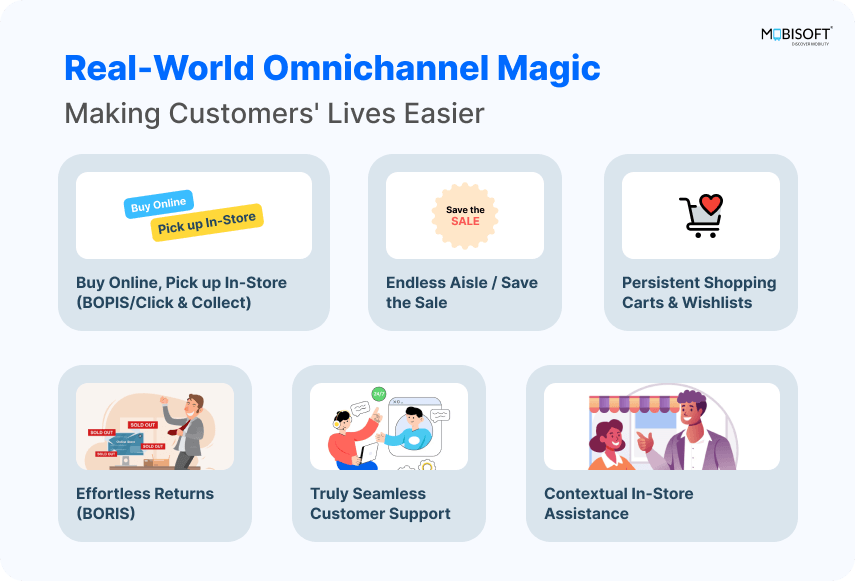
When the strategy and technology align, you unlock incredibly convenient and engaging omnichannel customer experiences:
Buy Online, Pick up In Store (BOPIS/Click & Collect)
The customer places an order online and picks up their items at a nearby store often within an hour or two, skipping shipping fees and wait times. Retailers like Target and Best Buy have made this a cornerstone of their omnichannel fulfillment services strategy.
Endless Aisle / Save the Sale
A customer is in your store, but the specific size or color they want is out of stock. An associate uses a tablet (or the customer uses a kiosk) to instantly check inventory across all locations and order the item for direct home delivery or pickup at another store.
Persistent Shopping Carts & Wishlists
A customer adds items to their cart on their mobile app during their commute. Later, they log in on their desktop at home, and the items are still right there in the cart, ready for checkout.
Contextual In Store Assistance
A store associate can access a loyal customer's online wishlist or recent browsing history (with permission) via a store tablet to provide highly relevant product recommendations or faster service.
Truly Seamless Customer Support
A customer initiates a support chat on the website about a faulty product. If the issue needs escalation, they call the support line. The phone agent already has the chat transcript and the customer's order history on their screen, allowing them to pick up the conversation immediately without making the customer repeat everything.
Effortless Returns (BORIS)
Allowing customers to return items purchased online to any physical store location offers immense convenience and often drives additional foot traffic.
How Omnichannel Directly Fuels Profitability (Industry Examples)
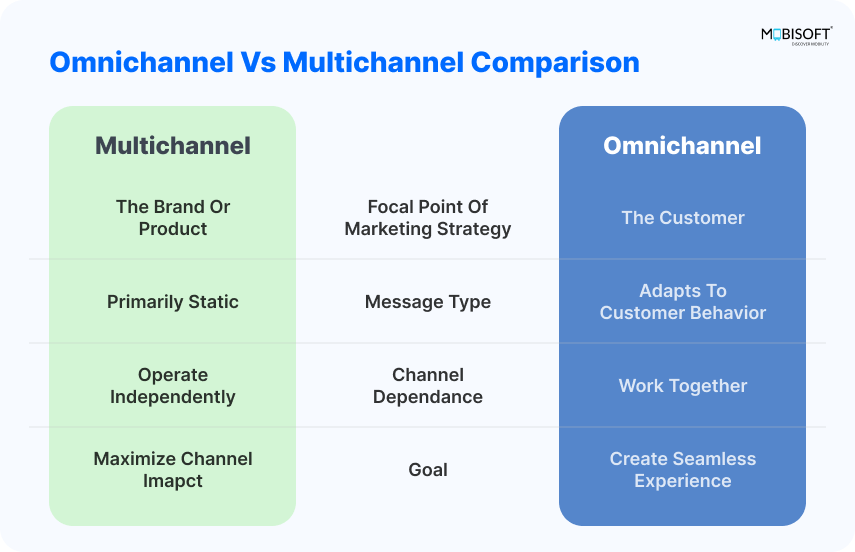
Companies investing heavily in seamless omnichannel shopping experiences aren’t just doing it for good PR; they’re seeing substantial returns.
Increased Sales & Higher Conversion Rates
By reducing friction across the buying journey (like persistent carts) and offering convenient fulfillment (like BOPIS, which often leads to additional in store impulse buys), companies convert more browsers into buyers. Features like Endless Aisle save sales that would otherwise be lost.
Significantly Higher Customer Lifetime Value (CLTV)
Happy, loyal customers come back and spend more. Numerous studies show that omnichannel shoppers have a much higher CLTV (sometimes spending 2–4x more over their lifetime) than single channel shoppers. Brands like Sephora, with their tightly integrated omnichannel loyalty programs and marketing platforms, cultivate this long term value brilliantly.
Improved Inventory Management & Efficiency
Real time, unified inventory visibility allows businesses to make smarter stocking decisions, reduce costly overstock or stockouts, and leverage store inventory for online orders (ship from store), often leading to faster and cheaper fulfillment. Retailers like Nordstrom have effectively used stores as fulfillment hubs.
Stronger Brand Equity & Reputation
Providing consistently excellent, convenient, and customer centric experiences builds a powerful brand reputation that attracts and retains customers.
To get started on a more integrated and custom e-commerce solution, consider exploring our guide to custom eCommerce platforms.
Conclusion: Build Bridges Between Your Channels, Not Walls
Today’s customers don’t care about your departments or channel silos. They see one brand and expect one seamless shopping experience. An omnichannel strategy helps you deliver that.
With the right tech like headless commerce, composable commerce, and integrated processes, you can meet customer expectations without friction. It’s about connecting your touchpoints website, mobile app, in store, social, and support—and creating journeys your customers actually enjoy. That’s what builds loyalty and drives long term growth.
Is your ecommerce setup connecting with customers across all channels? Are you ready to move past disconnected systems and create a seamless experience?
At Mobisoft Infotech, we build strong, flexible, and omnichannel integrated e-commerce solutions to make unified commerce a reality starting with well thought out custom eCommerce platform development in accordance with your business model. Let's build those connections, wow your customers, and expand your business.
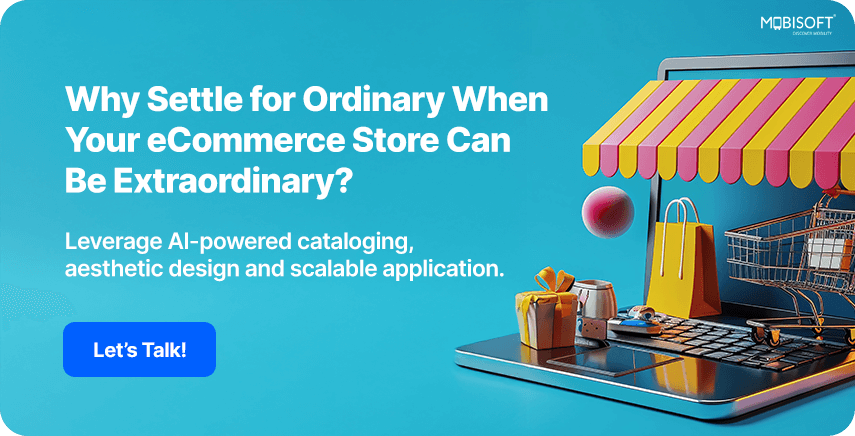

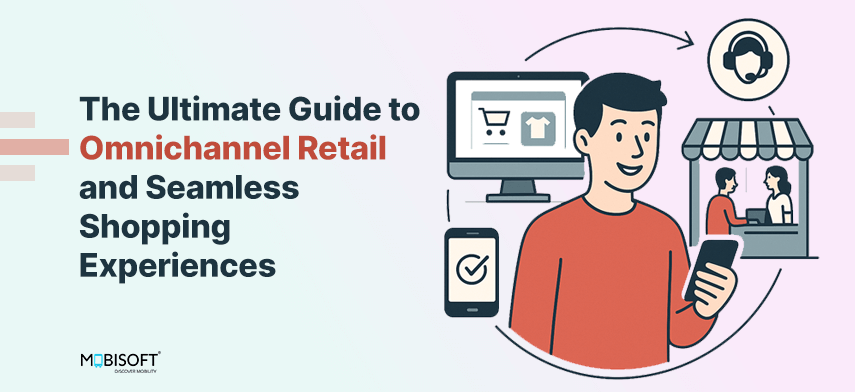


 May 21, 2025
May 21, 2025


